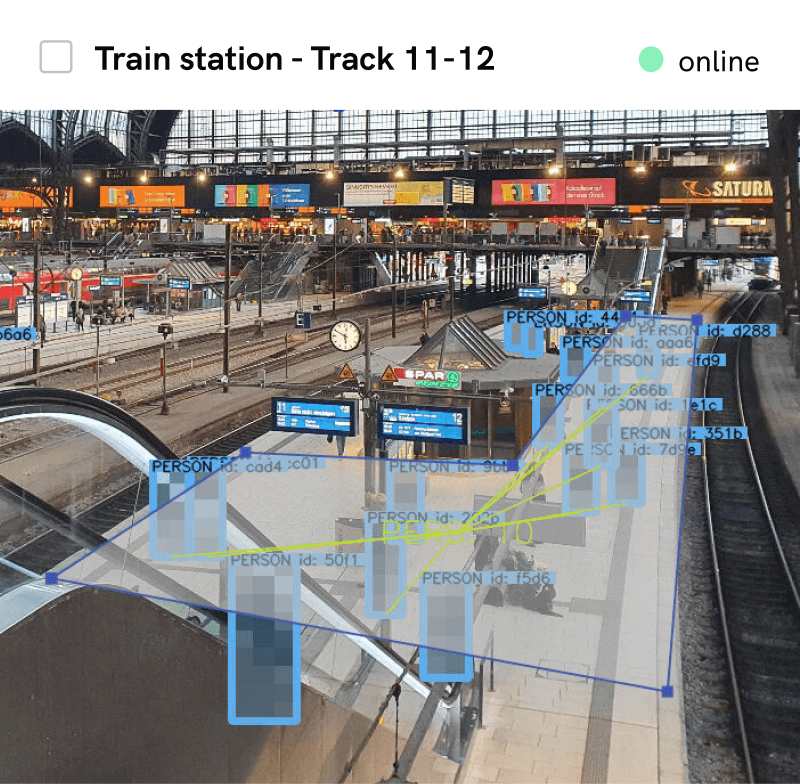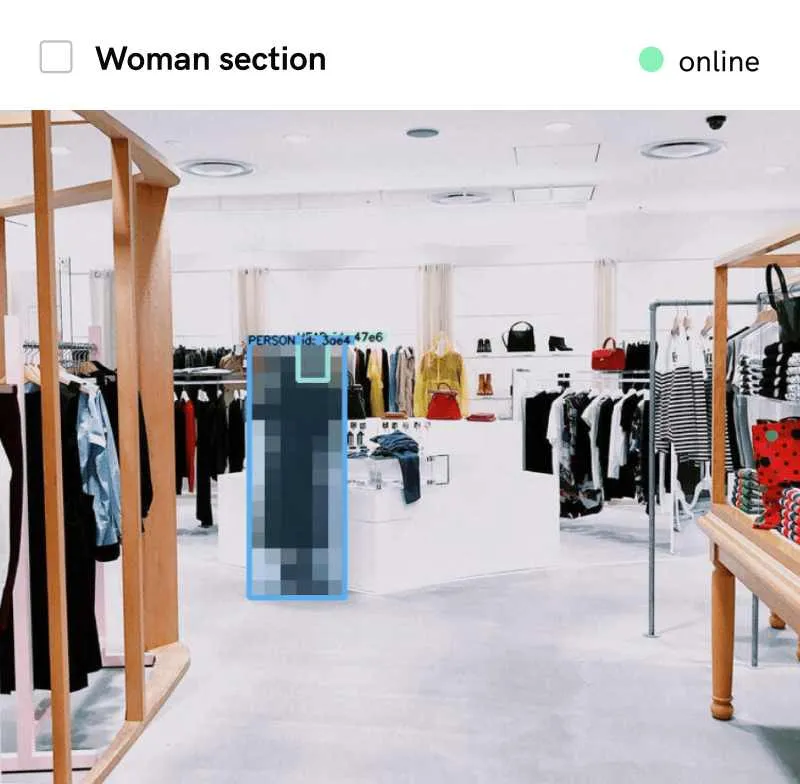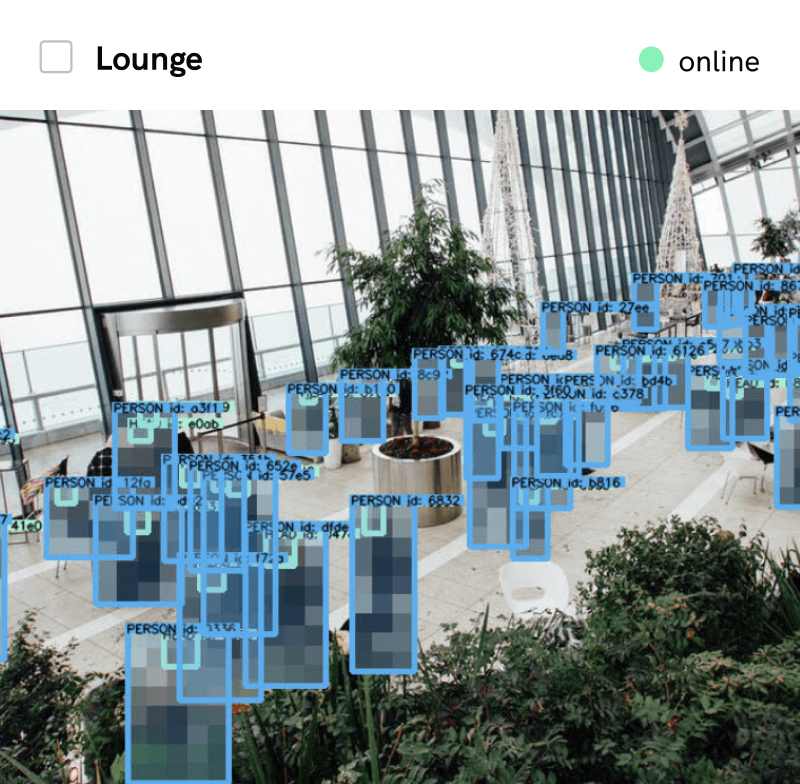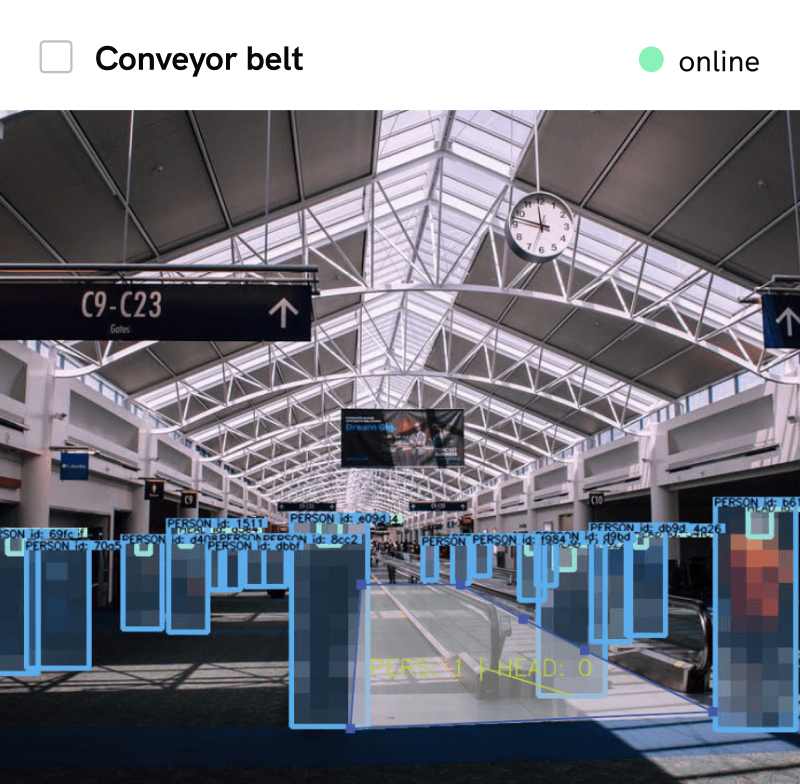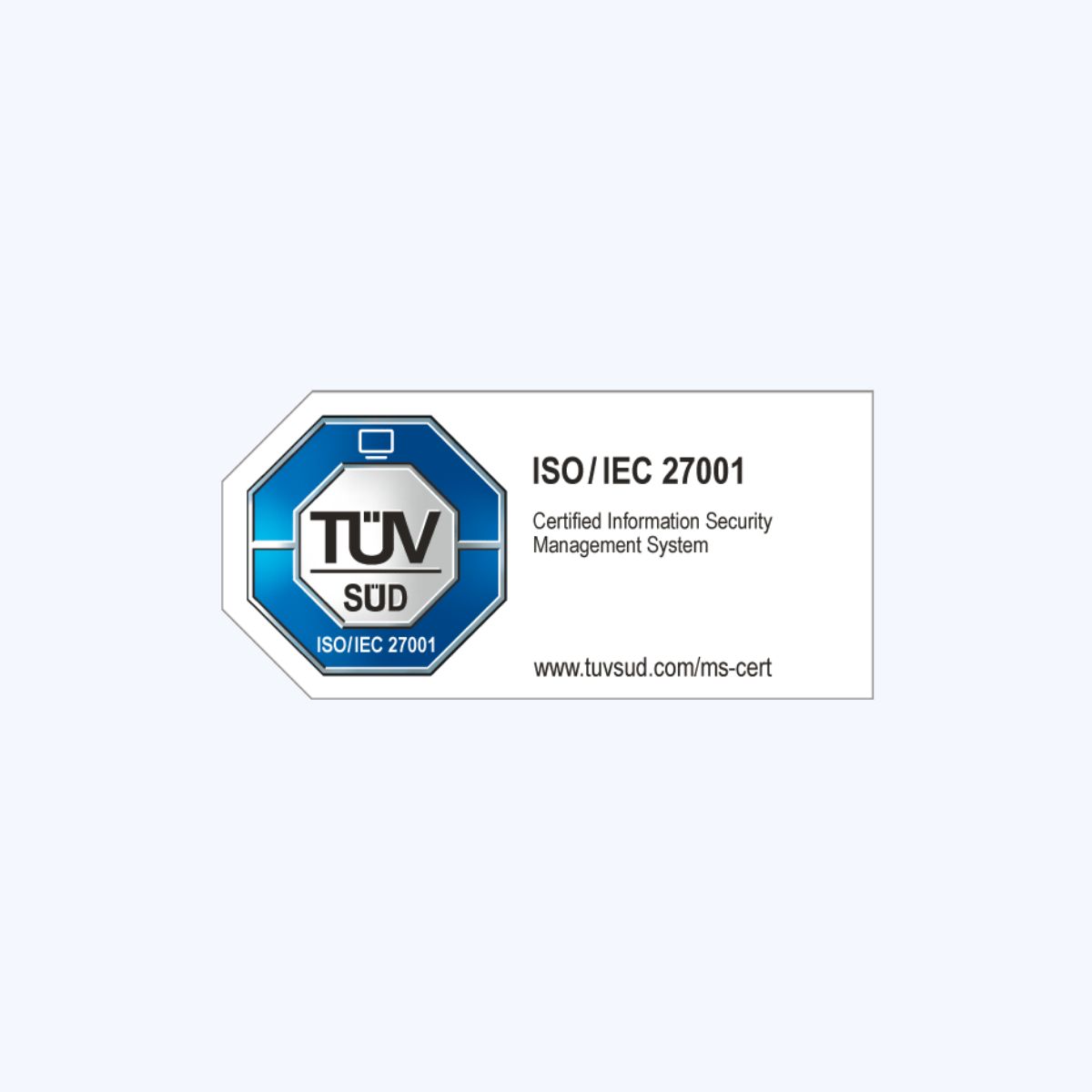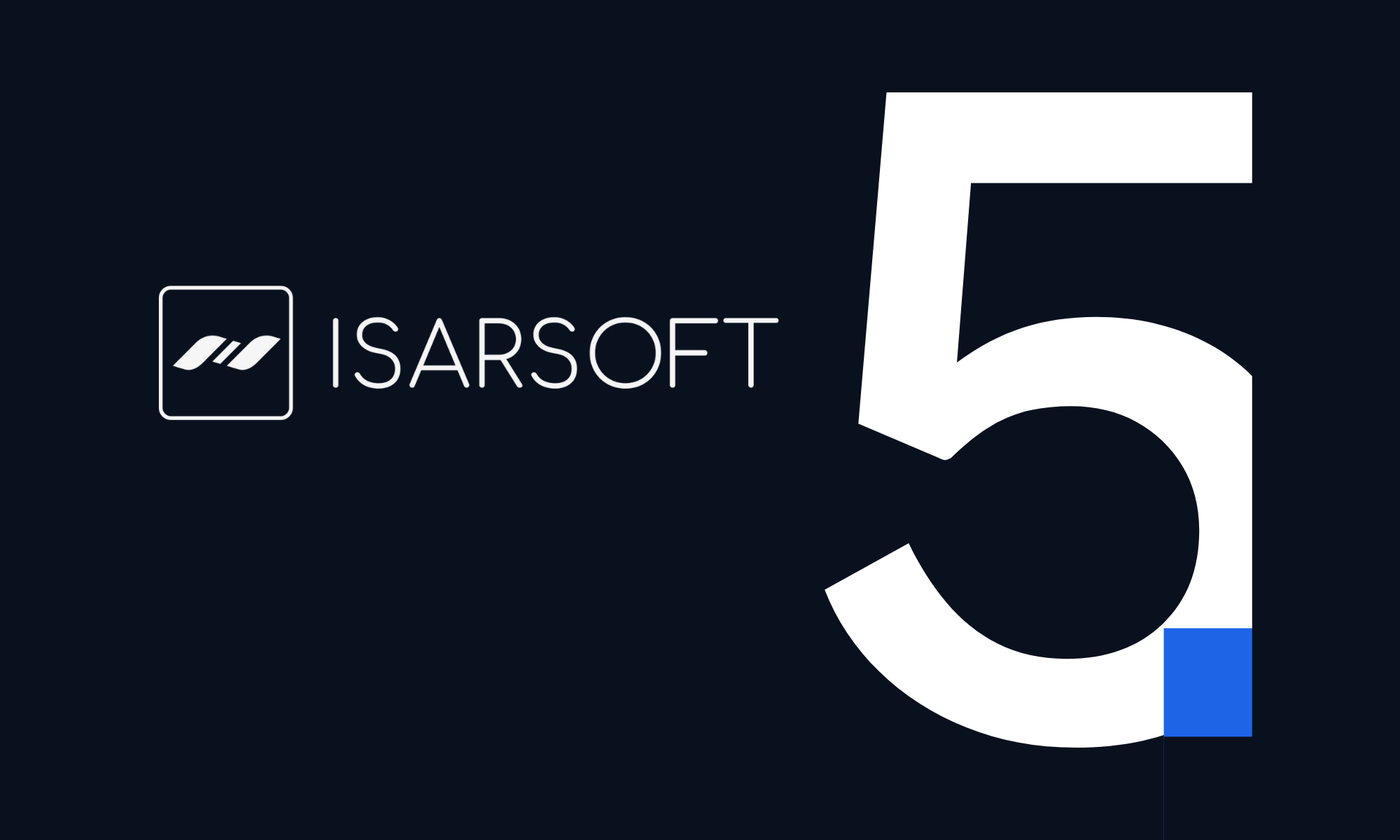Smart Cities in 2025: Through a Video Analytics Lens
Smart cities are broadly recognised as zones or areas that employ modern technologies in order to enhance the life of their inhabitants. A smart city will usually have a tech-based planning system that encompasses all aspects of daily life. In this article, we take a look at smart cities in 2025 and how video analytics tools such as Isarsoft Perception play a significant role.
Published
April 1, 2025

Introduction
What are smart cities?
Smart cities use advanced technology and rely on data-driven decision making in order to incorporate sustainable practices on a large scale, enhance the efficiency of operational process, and raise general living standards for citizens. Decision making is data-oriented and based on real-time insights, that are acquired by a judicious combination of video analytics, sensors, and networks.

All smart cities have some common key characteristics. They include:
- Intelligent infrastructure: Smart cities utilize advanced infrastructure systems such as smart grids, intelligent transportation systems (ITS), and sustainable energy management.
- Data-driven governance: They employ data analytics and predictive modeling to make informed decisions and improve city management.
- Enhanced mobility: Smart cities prioritize efficient transportation systems, including smart traffic management, electric vehicles, and integrated public transportation.
- Sustainable practices: They focus on reducing energy consumption, minimizing waste, promoting renewable energy, and implementing green building designs.
- Citizen engagement: Smart cities empower citizens through digital platforms, participatory decision-making processes, and interactive communication channels.
Smart cities in 2025: Latest Trends
The concept of a smart city first came to life in 1994 with a virtual digital city taking shape in 1994. Often referred to as the first smart city, the Amsterdam experiment paved the way for what we know as the modern smart city with cities like Barcelona, Seoul, and Copenhagen as some of the notable names in the domain. 29 years hence, the development of smart cities has gone from strength to strength.
Here are some important trends to look out for in 2025:
Use of AI and Machine Learning for Data Analysis
The core concept of smart cities relies heavily on data-oriented decision making. A city is typically comprised by many simultaneously occurrent systems - road traffic, rail and water-based transportation, infrastructure, parking facilities, etc. In order to effectively coordinate every individual cog, it is essential to have access to consistent, reliable data and be able to perform speedy analysis on it.
With the help of AI and machine learning, large volumes of data can be analysed and used to anticipate future events.
Development of 5G networks
As mentioned in the above point, data reigns most important in the grand scheme of things. 5G networks would allow access to faster internet speeds, and be capacious enough to support an increased number of IoT (Internet of Thing) devices. This greatly enhances data collection methods.
Blockchain Technology for Transparent Data Management
Simply speaking, blockchain technology is a database mechanism that enables transparent sharing of information within a business network. The data is stored in blocks that are then linked together by a chain, as the name suggests.
2025 has already seen a rise in the popularity and interest in blockchain tech around the world. As the value of data increases, the ways in which to fairly share and manage it are also coming into sharper focus. For a smart city to function efficiently, a large amount of data needs to be collected, processed, analysed, and managed on a daily basis. The implementation of blockchain would make the same much easier.
Amplified Focus on Sustainability
The entire idea of smart cities rests on the foundation of sustainability. With global warming conditions having worsened all around the world, it is crucial that closer attention is paid to measures that can help curb climate change. In the context of a smart city, this would entail the use of smart tech in traffic management in order to reduce carbon dioxide emissions, raising awareness about sustainable modes of transport such as bicycling, green methods of waste disposal, and energy-efficient buildings.
The Significance of Video Analytics in Smart Cities
In order to understand why exactly video analytics are significant contributors to the smooth functioning of a smart city, let us first take a look at video analytics itself.
Video analytics are designed to collect, process, analyze, and manage large volumes of video data. This data can pertain to a specific field or industry. Most video analytics tools are also configured to perform particular functions such as object detection and counting, trajectory mapping, and assessing the density of crowds.
Isarsoft Perception operates in the four broad categories of retail, traffic, transportation, and aviation. Traffic and Transportation are relevant in the context of city planning.
We shall now proceed to take a quick look at how video analytics can help in the smoother regulation of road traffic and transport in a smart city.
Traffic
Road traffic is an inescapable part of daily life. Video analytics tools such as Isarsoft Perception can be used to plan, optimize, and secure the flow of traffic and render it more navigable for users and personnel alike. One of the ways in which to do this is Active Traffic Management (ATM) - a concept that encompasses a broad range of strategies meant to ease the dynamic management of road traffic by using data analysis to anticipate current or future developments in traffic flow.
Traffic flow in smart cities is also optimized through the use of smart tech in traffic signals - coordinated progressive signal and coordinated traffic adaptive signal. Both these signals are designed for urban areas that witness busy traffic flows on a regular basis. The adaptive signal is built to function with rapid demand shifts, where the signal timings are adjusted based on periods of peak demand.
.jpg)
Another common metric used by traffic planners is the Origin-Destination Matrix, also known as the OD-matrix. It describes the relationship between the traffic origin and the traffic destination as a table, and is used to numerically depict the traffic flow at an intersection at any given point in time.
Smart cities also have other markers of smart traffic management tools such as smart street lights that are configured to adapt to movement by pedestrians, bicyclists, or vehicles and smart street counters that keep a running tally of passing people and cars.
There are many other ways of regulating traffic flow. One popular way is via vehicle classification - where each vehicle is classified into a particular group or class by identifying factors like weight, height, purpose, and number of axles. Differentiating the vehicles that ply on roads and highways make it much easier to manage traffic by implementing methods such as multi-lane highways where certain lanes are reserved for passenger cars and others for 'heavy vehicles' such as goods vehicles.
Video Tutorial
Transportation
The transportation within a dwelling area and encompassing a considerable portion of the city or town is most likely to be rail transportation in the form of overground/underground networks, intercity lines, regional trains, and long-distance trains.
The objective is to fully realize a system of transportation that fits within the paradigms of smart mobility. In order to do this, video analytics tools are used to perform passenger counting within trains and on the platform, deploy security personnel effectively based on demand, and analyze data patterns based on time of day, day of week, and holiday months.
.jpg)
Isarsoft Perception further allows analysis using heat maps. A heat map is a visual representation of a large volume of data, where the values are depicted by means of color. Each heat map in Isarsoft Perception caters to a different key performance indicator - there are the path maps that can be used to study the path taken by a detected object, position maps, and trajectory mapping. There also are maps for velocity and dwell time, that aim on analyzing volume and density respectively.
Benefits of Smart Cities
There are many benefits of a smart city. Some of the most important ones are as follows:
- Public Safety - A city that is smart automatically entails an interconnected system of networks, indicating that communication and accessibility for citizens would be enhanced. This is essential for the development of safer communities in the true sense of the phrase. In a smart city, safety-critical incidents can be effectively monitored and be followed by the dispatch of personnel speedily if the situation calls for it. The same holds true for ensuring crowd safety during events, infrastructure assessment to ascertain it meets relevant safety standards, and security protocol in place for singular events such as a natural disaster.
- Improved Transportation - Transportation and traffic is one of the basic building blocks of a city. The more efficient the transportation system of a city, the more economically viable the region. Why? Efficient transport facilities allow residents to commute within and outside the city to their workplace in a short amount of time, making living in the region an attractive proposition. By cutting short commutes and allowing people easy access to nearby regions, smart cities enable a higher standard of living.
- Environment Friendliness - A smart city is also an environment-friendly city. The use of data-driven decision making and tech-based tools ensures that every process is thoroughly analyzed and vetted. A planner will know how much time the process will take from start to finish, the total expenditure, the resources required, and the user opinion. This helps in making choices that focus on conservation of resources, are cost-effective, and are aimed at reducing the environmental impact by methods such as reducing carbon dioxide emissions, vehicular fumes, and improper waste treatment.
- Improved Infrastructure - A smart city can use digital resources to identify and detect underlying problems in the existing infrastructure. Roads, bridges, and highways are cost-intensive structures that require regular upkeep and maintenance to be sustained safely. Smart tools that allow predictive analysis can be used to identify defects and perform reparations to provide a guarantee of safety to citizens.
Case Study: Barcelona
Barcelona was one of the first European cities to begin a large-scale adaptation of smart tech. At the time in 2014, there were very few cities around the world with a public infrastructure that was largely digitized - namely, Singapore, Seoul, and New York.
The city installed an extensive sensor network built to collect data about public utilities and pollution statistics - transport, use of energy, noise and air pollution levels. This data was initially accessible by the government and private sector companies involved in planning, development and infrastructure. However, the last five years have witnessed a more active involvement on the part of the residents - with the smart city initiative becoming an individual effort too.
.jpg)
The core approach is at the moment centered around data privacy and data sovereignty. Governance has been opened up to the residents through platforms like Decidim (a digital platform) wherein residents can take an active part in helping shape the government agenda. This initiative was headlined by Francesca Bria (CTO), under the mayorship of Ada Colau. Participation rates were high, with over 40,000 residents taking part in the proposal processes. It was estimated that 70% of the proposals came directly from the residents.
The idea is based on a synchronous alignment of tech tools with the needs and requirements of a city's residents. Neither one is effective without the other, and by ensuring the active participation of residents in decision-making, governmental bodies can ensure equity.
Key Insights
The key takeaways from this article on smart cities points to a future wherein the foundational concepts of a smart city will continue to be better supplemented by the advancements in technology and innovation.
With the integration of 5G networks on a large scale, advancements in AI and blockchain tech, and a stronger focus on data privacy - smart cities show themselves as capable forerunners of upcoming developments in the domain of city planning.
The development of smart cities is game-changer for road safety as well.
'Some successful strategies have introduced low pollution/emission zones that restrict the entry of vehicles in an attempt to create a designated space for bicyclists and walkers.' Popular initiatives that focus on reducing CO2 emissions have been implemented in cities across the world, and have been outlined in our article on road safety.
A similar intention shows up in the European Green Deal, designed to achieve complete climate neutrality by 2050 with an interim goal to reduce greenhouse gasses by 2030 by 55% with 1990 as year of reference.
More about Isarsoft
With Isarsoft Perception, your camera systems become part of your business intelligence. Whether the goal is to increase efficiency, customer satisfaction or safety, Isarsoft Perception provides the insights needed for informed decisions.
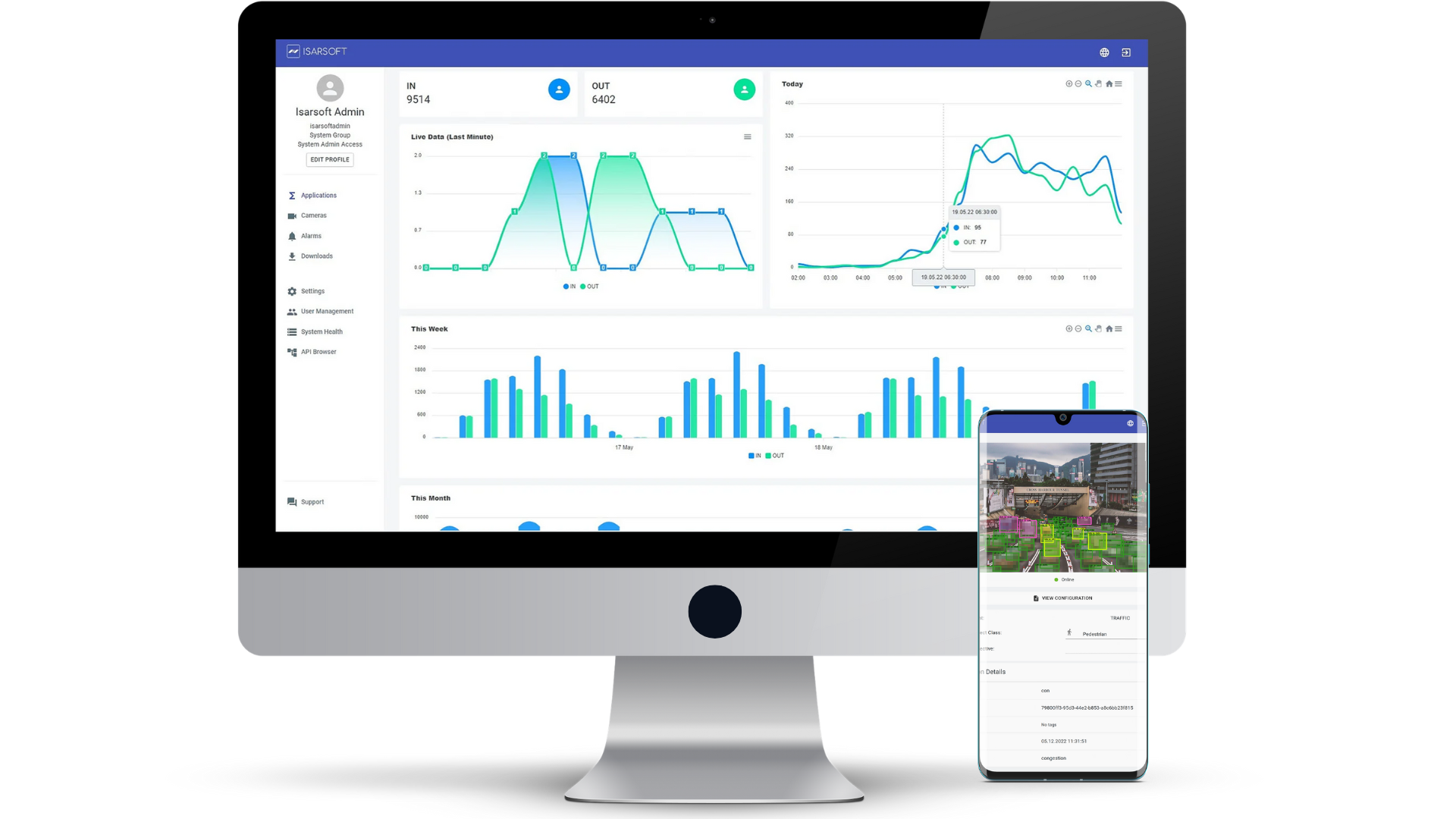
Contact us, to learn more about how to turn security cameras into intelligent sensors.
Optimize your business processes.
Utilize Isarsoft’s intelligent video analytics to optimize operations and tracking footfall traffic in real time.
